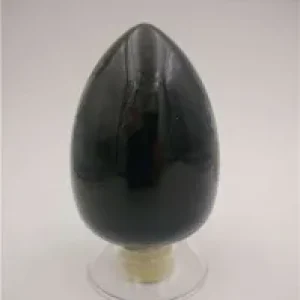Vanadium carbide (VC) is a refractory ceramic compound known for its hardness and high melting point. Here are the key parameters that define its properties and characteristics:
Chemical Formula: VC
Molecular Weight: 91.97 g/mol
Appearance: Vanadium carbide is typically a grayish-black, crystalline powder.
Density: Around 5.95 g/cm³, which is quite high, contributing to its use in applications requiring high density and wear resistance.
Melting Point: The melting point of vanadium carbide is approximately 2825°C (5117°F), making it suitable for high-temperature applications.
Thermal Conductivity: VC exhibits good thermal conductivity, which is beneficial for heat management in cutting tools and other high-temperature applications.
Hardness: With a Vickers hardness of about 2200 Hv, vanadium carbide is extremely hard, similar to other hard carbides like tungsten carbide and zirconium carbide.
Chemical Stability: VC is generally stable under a wide range of conditions but can react with strong oxidizers.
Mechanical Properties: In addition to hardness, vanadium carbide displays high compressive strength and moderate fracture toughness, making it useful in wear-resistant coatings and composite materials.
Oxidation Resistance: At high temperatures, VC forms a protective vanadium oxide (V2O5) layer, enhancing its resistance to oxidation.
Electrical Conductivity: Like many carbides, VC is electrically conductive, although the conductivity is lower compared to metals.
Grain Size: The size and uniformity of the grain structure can significantly affect the properties of vanadium carbide, with finer grains generally leading to enhanced hardness and toughness.
Formation: Vanadium carbide can be synthesized through various methods, including carbothermal reduction of vanadium oxides in a reducing atmosphere at high temperatures.
Applications: Due to its properties, VC is used in tool bits, wear-resistant coatings, and as an additive to improve the properties of steels and other alloys. It is also used in the production of cemented carbides and hardmetals.
